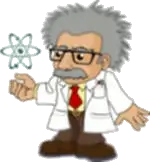Original 6497
Two numbers are in the ratio 5:6. If one number is smaller by seven and the other is larger by seven, there will be new numbers in the ratio 4:7. What is the original, and what are the changed numbers?
Final Answer:

Tips for related online calculators
Need help calculating sum, simplifying, or multiplying fractions? Try our fraction calculator.
Check out our ratio calculator.
Do you have a linear equation or system of equations and are looking for its solution? Or do you have a quadratic equation?
Check out our ratio calculator.
Do you have a linear equation or system of equations and are looking for its solution? Or do you have a quadratic equation?
You need to know the following knowledge to solve this word math problem:
algebrabasic operations and conceptsnumbersGrade of the word problem
Related math problems and questions:
- Rectangle's dimensions
 The rectangle has an area of 147 cm². One of its sides is three times longer than the other side. We increase the shorter side of the rectangle by 8 cm. By how many cm² will the new rectangle's area be larger than the original rectangle?
The rectangle has an area of 147 cm². One of its sides is three times longer than the other side. We increase the shorter side of the rectangle by 8 cm. By how many cm² will the new rectangle's area be larger than the original rectangle? - A sculptor
 A sculptor is duplicating a statue based on an original statue. If the scale factor of the replication is 3.2, will the new statue be larger or smaller than the original statue (enter 1 = larger, 0= smaller)
A sculptor is duplicating a statue based on an original statue. If the scale factor of the replication is 3.2, will the new statue be larger or smaller than the original statue (enter 1 = larger, 0= smaller) - Remainder 8124
 The sum of the numbers is 878. If we divide the larger number by the smaller one, we get a ratio of 6 with the remainder of 17. What are the numbers?
The sum of the numbers is 878. If we divide the larger number by the smaller one, we get a ratio of 6 with the remainder of 17. What are the numbers? - Smaller 3848
 Dano had a natural number in mind. If he changed this number to a 2:5 ratio, he would get the number 24 smaller. What number did Dano think?
Dano had a natural number in mind. If he changed this number to a 2:5 ratio, he would get the number 24 smaller. What number did Dano think? - Relatively 71994
 The two numbers are in a relatively 3:7 ratio. If the value of the larger number is 21, find a smaller number.
The two numbers are in a relatively 3:7 ratio. If the value of the larger number is 21, find a smaller number. - Square - increase sides
 If we increase the length of one pair of opposite sides of the square by 2 cm and the length of the other two sides by 1 cm, we will create a rectangle, the perimeter of which will be 10% larger than the perimeter of the original square. What is the side
If we increase the length of one pair of opposite sides of the square by 2 cm and the length of the other two sides by 1 cm, we will create a rectangle, the perimeter of which will be 10% larger than the perimeter of the original square. What is the side - Two numbers
 One number is 79 more than the other. If we divide the larger number by the smaller one, we get the quotient five and the remainder 11. Determine both numbers.
One number is 79 more than the other. If we divide the larger number by the smaller one, we get the quotient five and the remainder 11. Determine both numbers.
